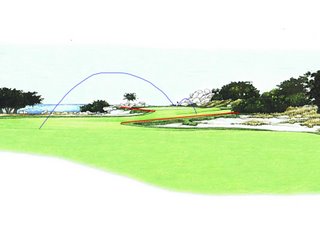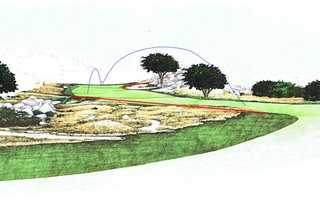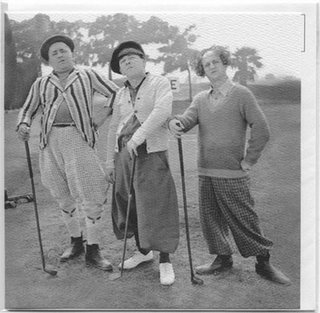
The latest way to select an architect?
No. 1: Shopping for the Right Opinion
Many clubs are quite prepared to go look for a golf architect that will give the green’s committee the answers they are looking for. Often the right answer is not what they want to here, but many don’t like to let the facts get in the way of their own personal opinion. Dealing with a committee is quite complex, you have to deal with a lot of personal agendas and egos to make any progress. Some want to change everything whereas others want no expense or disruption. It is very hard to get the committee to focus on the real goal, which is what is best for the golf course.
No. 2: Not Enough Time or Money
I have been asked to ensure a restoration is accurate, only to be told that they can’t afford more than a visit every 10 days. Imagine a club finding their own contractor to save money, who then cuts corners on everything leaving behind work that needs to be rebuilt only a few years later. My least favourite was working with a dozer operator provided by the club who had no golf experience because he was half the going rate. The work was limited by his ability to understand. The only way to ensure a successful project is to provide an appropriate budget and a realistic schedule to get the work done well. Committee’s must remember, like everything in life, you get what you pay for.
No.3 : Micromanagement
Green Committee members and chairmen must first have a basic understanding of the membership, the club’s history and the golf architecture of their course. It is a steep learning curve, and often it involves removing preconceived views to understand what is best in their situation. There are no standard answers, particularly in renovation. With a little knowledge, and not enough understanding, it is easy to become a backseat driver. Rather than helping, the committee member will often inhibit the golf course architect from doing their best work. The architect needs direction and interaction with the committee to do what’s best for the club, but any uninvited involvement meddling reduces the ability of the architect to do his best work.
No. 4: Unrealistic Demands
Television has hurt the game. Members are enamoured by what they see on the television and want their own championship course in championship conditions all year. They want us to build bunkers that always provide a perfect lie. They want greens to run fast regardless of weather. They want any imprefection or uneven stance removed for fairness, regardless of architectural merit. If a green is too difficult with current green speeds, they would rather rebuild it for playability than save the great green by slowing the speed. Television, personal ego and the insistence on stroke play have all conspired to make the golfers demands unrealistic. Golf was never about fairness. I wish all members would understand that the ability to deal with adversity differentiates between a great player and a good one."
No. 5: The Legacy
The biggest hindrance can often be dealing with a large ego, with the worst being the retired golf pro that still considers the course his. Many members view serving as green’s chairman as a chance to leave their mark on the course, regardless of advice. This is usually how holes that didn’t need a change get rebuilt. Often key projects or vital equipment purchases are put off to get the vanity project done. Green Committees can avoid this pitfall by developing master plans for long-range improvement, and then having the architect put together a phasing plan to prioritize the work. Such plans often address proposed architectural changes for the golf course, but also should include the less sexy infrastructure necessities such as irrigation, drainage systems and maintenance facilities.
No. 6: Unbalanced Representation
Committees are cumbersome and often have difficulty reaching important decisions. It is even worse when they are unbalanced often fail to consider the golfers of different abilities. It should be no surprise that many of the changes made in the name of "toughening up the course" or "modernizing" it wind up making the course too difficult for the majority of players. Green Committees should be comprised of golfers of both genders and all abilities. This helps to take different perspectives into account, and it helps to keep lines of communication open with other golfers.
No. 7: The Inability to Make Tough Decisions
The duties of a green chairman and Green Committee are not for the timid. Issues often arise that require tough decisions that may anger factions within the golf membership. Flashy projects like bunker renovation is usually an easy decision, but replacing the irrigation system or adding miles of much need drainage takes some conviction, but it is trees where the strength of the chairman or committee is vital. I have yet to find a course that wasn’t in need of tree removal programs. Removing trees becomes such an emotionally charged issue, but the removal is so important to turf, playability, views and the health of the trees themselves. If you don’t like to offend anyone, don’t serve on a green’s committee.
I will look at something more design related tomorrow.









